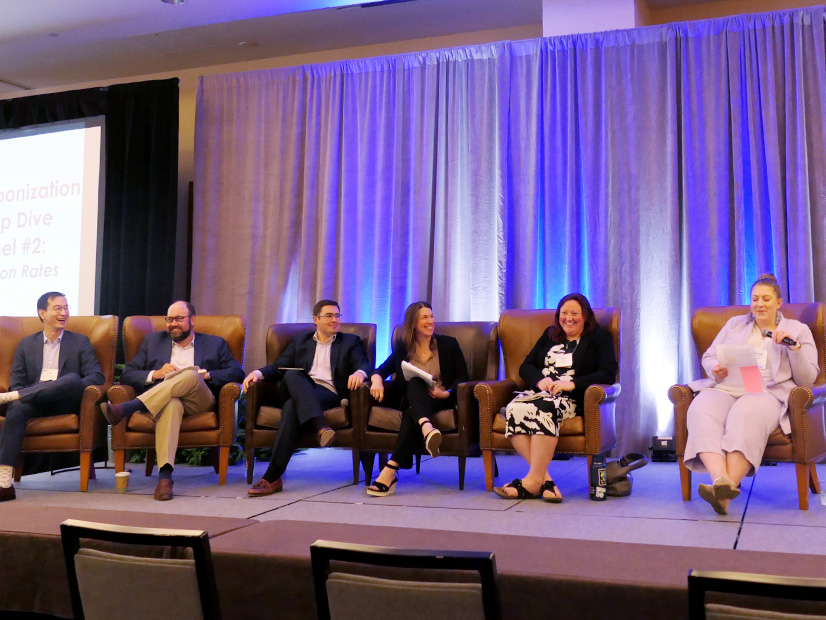
STOWE, Vt. — As New England plans how to cope with peak winter electricity demand with a growing reliance on renewables, energy leaders in the region are calling on the states to look at developing time-varying rates to reduce costs and environmental burdens.
Speakers at the 75th New England Conference of Public Utilities Commissioners Symposium generally agreed on the need to develop rate structures that would better allow customers to respond to market signals, incentivizing them to reduce energy consumption during periods of limited energy supply. The vast majority of customers in the region currently pay flat rates, regardless of the amount of stress on the grid.
“Advanced rates are critical to any cost-effective decarbonization strategy,” Long Lam, a senior associate at the Brattle Group, said. Lam pointed to a 2020 study from the Brattle Group that analyzed data from time-of-use rate pilot programs in Maryland. The study found that customers saved an average of 5 to 10% on their bills, while reducing summer peaks by 10.2 to 14.8% and non-summer peaks by 5.1 to 6.1%.
Lam also said that moving away from flat rates could be especially important as homes and vehicles electrify, and that rates should be designed to accommodate these changes.
Travis Kavulla, vice president of regulatory affairs at NRG Energy, argued that time-of-use rates should be the default rate design for consumers across the region, saying that customers would be far less likely to take the initiative on their own to opt-in.
“If you don’t have time-of-use rates … you’re putting consumers in a position where they’re just along for the ride,” Kavulla said.
By reducing energy peaks, Kavulla said, the region would be able to minimize stress to the grid, along with the financial and environmental costs of bringing heavily polluting peaker plants online to meet demand.
In a white paper Kavulla published earlier this year, he highlighted the untapped potential of smart meters and the need to develop increased demand flexibility incentives for utilities and customers.
“In nearly every other market, we have empowered consumers to decide whether, when, and how to buy products — and those decisions inform but are not supply-side decisions,” Kavulla wrote. “So too it should be in the electricity economy.”
But developing new rates will not be a simple process, with potential impacts reverberating throughout the energy industry and in households across the region.
“We need to be extremely thoughtful and have a thoughtful stakeholder engagement process from the very beginning,” said Carleton Simpson, a commissioner at the New Hampshire Public Utilities Commission. “We need to take the time to understand what the impact would be for many different groups of folks out there.”
Claire Coleman, who serves as consumer counsel for the state of Connecticut, was open to changing the default rates while keeping ratepayers in mind.
“There are strong affordability reasons to choose time-varying rates as the default option,” Coleman said. “I think the default option should be the one which the majority of customers benefit from.”
Coleman noted that customer education and engagement would be essential for successful implementation and that “shadow billing” options could help customers compare how different rates would affect their bill. She also spoke in favor of developing low-income discount rates to help customers struggling to pay their energy bills, which she said would be particularly important to equitably distribute the costs of the energy transition.
“Not every customer has the same ability to pay,” she said.
In order to accommodate customers with special needs or limited energy-use flexibility, the speakers agreed that if time-varying rates do become the default, customers need to have other options.
“We absolutely have to have an opt-out program where people can opt out if the rates are not working for them,” said Amy Boyd, vice president of climate and clean energy policy at the Acadia Center.

